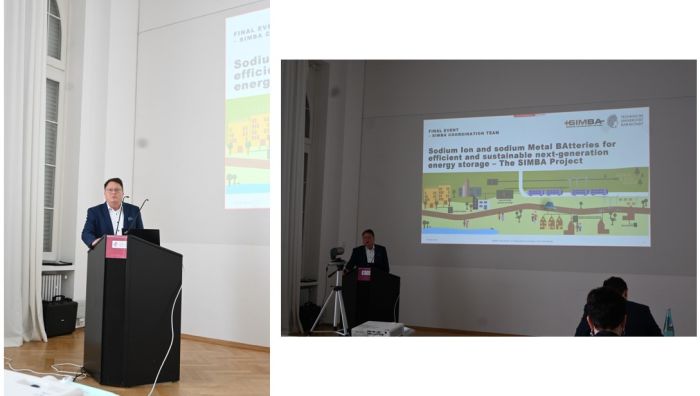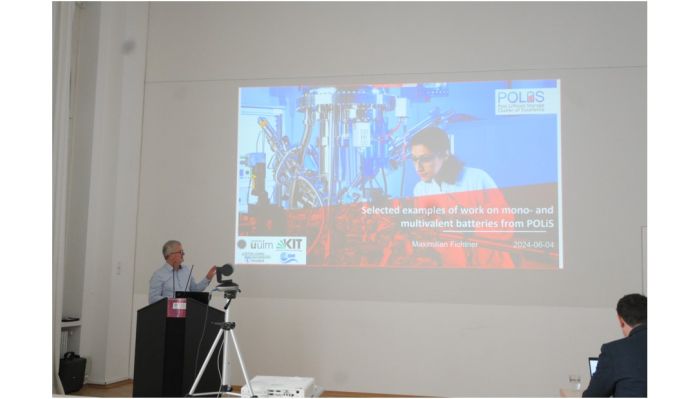June 2024
After a journey of almost three and a half years, the SIMBA project organized and celebrated its final event on Tuesday 4th of June 2024 at the magnificent Georg-Christoph-Lichtenberg-Haus, part of the Technical University Darmstadt (TUD). Throughout the day, three keynote speakers provided insightful knowledge into the state of the art of today’s Sodium-ion batteries (SIBs) and four SIMBA partners presented the final results of the SIMBA project. The final event was attended by forty people on location and followed online by thirty interested persons.
This final event celebrated the achievement of most of the SIMBA objectives, including the development of high energy density and more durable anodes, and high-energy and low-cost cathode materials. All cell components have been fully integrated into liquid-electrolyte batteries and solid-state electrolyte batteries.
Moreover, SIMBA has also lead to a much better understanding of the fundamental transport and degradation mechanisms in SIBs.
The day started with a welcome and a project introduction by the SIMBA coordinator Prof. Dr. Ralf Riedel, professor emeritus of chemistry at the Technical University of Darmstadt (TUDa). Prof. Riedel contextualized the SIMBA project by comparing the SIB technology with other battery technologies and providing a timeline of SIB prototypes.
Prof. Riedel’s talk was followed by the presentation of the first keynote speaker, Prof. Dr. Maximilian Fichtner, professor at the University of Ulm and director of the Helmholtz Institute Ulm (HIU) of the Karlsruhe Institute of Technology (KIT). Prof. Fichtner presented the audience the work which has been carried out in the POLIS cluster (Post-Lithium Cluster of Excellence); a pool of universities and research organizations across Germany working on the further development of post-lithium battery technologies, including works on sodium batteries but as well other type of batteries.
The third speaker of the day was Dr. Maider Zarrabeitia. As the SIMBA work package leader of WP2 on the materials development, she presented the project’s final results in the field on the material development. The focus was on the cathode (Prussian White (PW)), anode (hard carbon and SiCO/SICN) and electrolyte (polymer) materials developed within the SIMBA project.
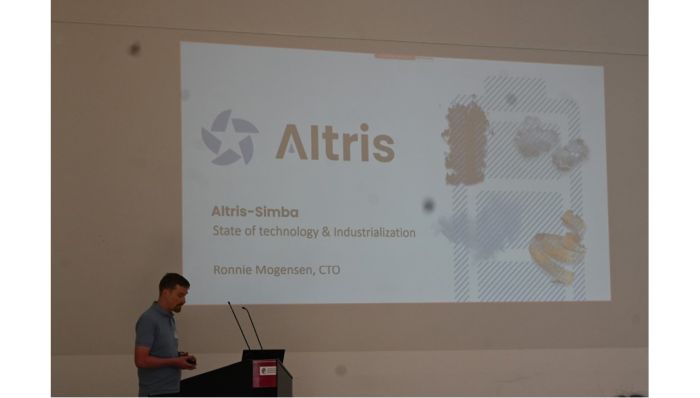 After a short break, Dr. Ronnie Mogensen, the CTO of ALTRIS, a pioneering company in the SIB industry, gave some very interesting insights in the development of their PW cathode material. For example, Mogensen explained to the audience how Altris is operating to maximize the cathode performance and how is focusing on the improvement of the processability and handleability of the material. He stressed that for Altris it will be very important that each batch coming out of production will have the same exact quality and performance.
After a short break, Dr. Ronnie Mogensen, the CTO of ALTRIS, a pioneering company in the SIB industry, gave some very interesting insights in the development of their PW cathode material. For example, Mogensen explained to the audience how Altris is operating to maximize the cathode performance and how is focusing on the improvement of the processability and handleability of the material. He stressed that for Altris it will be very important that each batch coming out of production will have the same exact quality and performance.
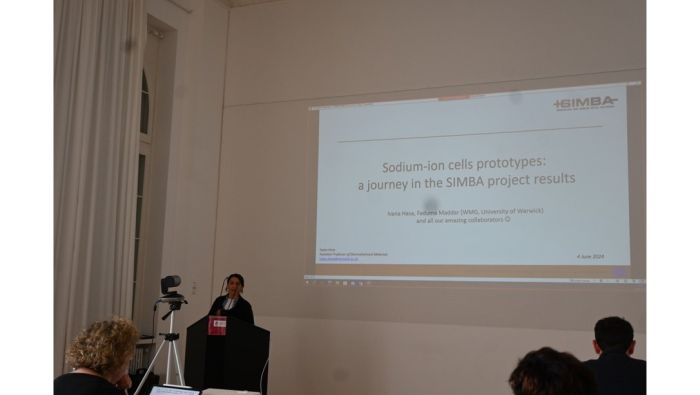 The second presentation on the SIMBA final results was given by assistant professor Dr. Ivana Hasa from the University of Warwick. In the SIMBA project she was responsible for the WP4 activities related to the cell assembly and cell prototyping. In her presentation she showed the journey throughout the project to design and build the 1Ah prototype cells.
The second presentation on the SIMBA final results was given by assistant professor Dr. Ivana Hasa from the University of Warwick. In the SIMBA project she was responsible for the WP4 activities related to the cell assembly and cell prototyping. In her presentation she showed the journey throughout the project to design and build the 1Ah prototype cells.
The second half of the day wa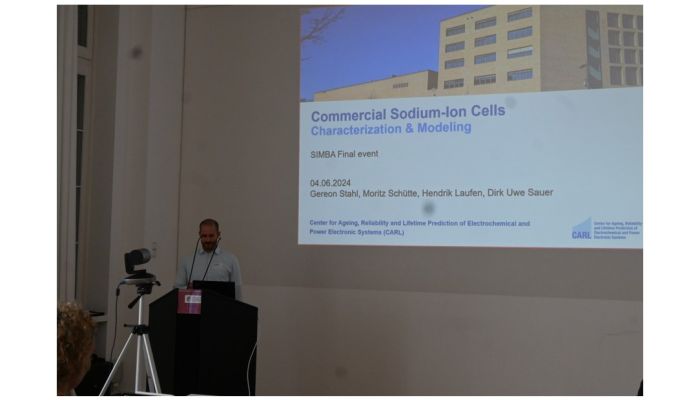 s kickstarted by Gereon Stahl, head of the battery modelling department of the RWTH Aachen University. Stahl showed very interesting insights in the results he and his colleagues got out of researching in-depth commercial SIB cells; from cell performance to cell ageing and self-discharge process.
s kickstarted by Gereon Stahl, head of the battery modelling department of the RWTH Aachen University. Stahl showed very interesting insights in the results he and his colleagues got out of researching in-depth commercial SIB cells; from cell performance to cell ageing and self-discharge process.
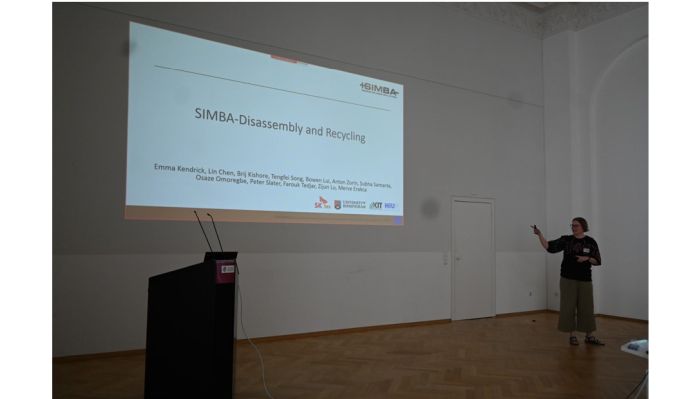
The third SIMBA presentation was given by Prof. Dr. Emma Kendrick from the University of Birmingham and provided the final results on the disassembly and recycling activities in the SIMBA project (worked upon in SIMBA WP6). She showed some impressive and noteworthy slides on the unequal distribution of critical raw materials for batteries across the globe. She concluded that access to these raw materials in Europe may need to come partially from recycling and reclamation efforts. Accordingly, she detailed how the SIMBA project both developed direct reuse and mechanical sorting approaches to ensure advanced steps in the disassembly and recycling of newly synthesized battery materials.
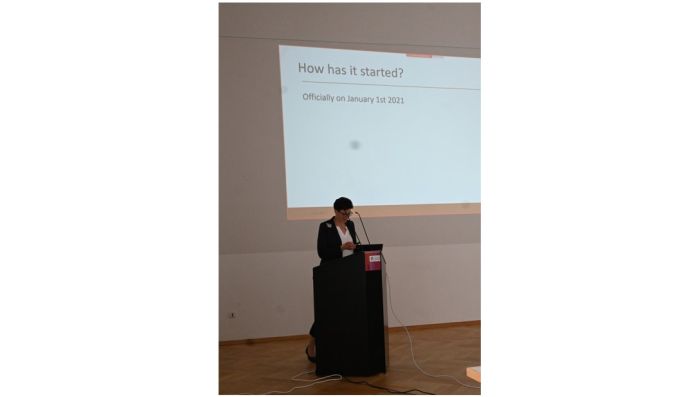 The final event was concluded by Dr. Magdalena Graczyk-Zajac, the deputy coordinator of the SIMBA project and project leader at EnBW. She presented how the SIMBA project was ‘born’ six years ago and described its gradual maturation, culminating in the final results presented today, the 4th of June 2024. She closed the event by thanking all the SIMBA partners for their worthful and profitable collaboration over the past three and a half years.
The final event was concluded by Dr. Magdalena Graczyk-Zajac, the deputy coordinator of the SIMBA project and project leader at EnBW. She presented how the SIMBA project was ‘born’ six years ago and described its gradual maturation, culminating in the final results presented today, the 4th of June 2024. She closed the event by thanking all the SIMBA partners for their worthful and profitable collaboration over the past three and a half years.
